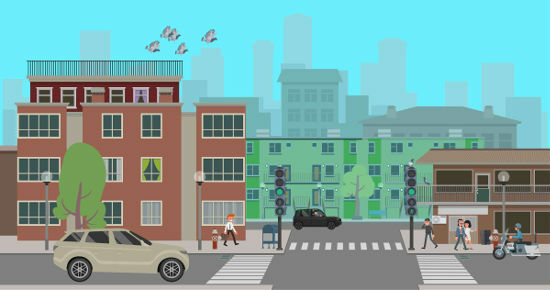What is Transit Day?
The day september 25th is the day that, nationally, the National Traffic Day in Brazil. This day was chosen for the Traffic Day celebrations as a direct reference to the Brazilian Traffic Code (CTB), also known as Law No. 9503/1997. This law was approved on September 23, 1997 and amended on September 25th.
The proposal of this law was to establish guidelines for the management of traffic in Brazil, such as questions about infractions and attributions to the institutions responsible for traffic in Brazil. Law No. 9503/97 was recently amended by Law No. 13 546/2017. This amendment modified some specific points in order to tighten the legislation for drivers who drive vehicles under the influence of alcohol or drugs.
It is important to make it clear that the understanding of the word "Traffic” mentions all the traffic of people, objects and animals, which happens through the use of some locomotion transport or by walking, both on public roads and on roads private individuals.
Traffic week
Transit Day is included in the National Traffic Week, week of traffic education activities. This week usually takes place from the 18th to the 25th of September throughout the country. This week, educational activities take place with the purpose of raising awareness among vehicle drivers and pedestrians. These activities are organized in several cities in Brazil and are promoted by National Traffic Council (Contran) and National Traffic Deparment (Denatran).
These educational activities carried out during Traffic Week address issues such as the importance to respect traffic signs and not to drive while intoxicated, in the case of vehicle drivers. In the case of pedestrians, issues such as the importance of crossing the street only at the crosswalk are addressed.
Also access:the movement of traffic
What is the importance of this date?

The educational activities carried out during Traffic Week are extremely important to raise awareness of vehicle drivers.
The importance of Traffic Day and all the activities that take place during the National Traffic Week is directly related to the need to reduce the number of traffic incidents, especially incidents with victims fatal. Data currently reinforce that Brazilian traffic is quite violent. For this reduction to happen, it is necessary to have an awareness policy for Brazilian drivers.
As a way to demonstrate the dimension of traffic violence in Brazil, data that show the number of people who die annually in traffic in our country can be used. In data provided by the DPVAT (Insurance for Personal Injury Caused by Motor Vehicles on Land Roads), in 2017, for example, the occurrences of death in Brazilian traffic were of 41 151 victims. In 2016, this number had been 33 547|1|.
The problems in Brazilian traffic are, in general, related to the recklessness of drivers. One of the main causes of traffic accidents in Brazil are drivers who drive while intoxicated|2|. In fact, as a result of the large number of drivers who have accidents because they are drunk, the country's legislation has tightened up through the so-called “Dry Law”, law nº 11 507/2008.
Also access:speed of a vehicle
This law was also approved with the aim of toughening the CTB, imposing stricter punishments on drivers who were caught driving drunk. Of course, traffic problems in Brazil are related to other issues, such as signage and roads in precarious situations in certain places, vehicles in poor conditions of use, etc.
In any case, it is important to carry out educational campaigns to raise awareness among drivers, as this is the only way that fatal incidents in Brazilian traffic will be reduced.
|1| After five years of decline, traffic deaths are up 23% in 2017. To learn more about this data, click on here.
|2| Yellow May Campaign alerts to 37,000 deaths in the country's traffic. To access, click on here.

